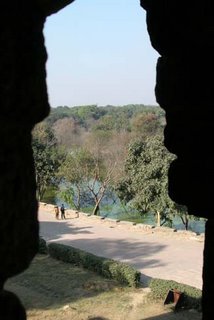Marriage by Arrangement
Only her tiny face is visible, her kohl-ringed eyes looking up at us, wondering. Little fingers burrow out of the fabric to wrap around each other, revealing henna-drawn patterns traced by the women of her family.
My mind superimposes another picture over the bride’s face, and I see a small, delicate nose, inquisitive eyes, and pricked ears framed by the twisting, furrowed roots of an aging poplar … a photo of a fox peering out from its den under a tree. She looks so similar, this woman swaddled in miles of star-studded silk, all golds and white, great swatches of it draped high over her head and increasing her bulk by several feet.
“The internet matched us,” she had said two days earlier. “First, our parents met and agreed that we would make a good marriage. Then, we met.”
I had been watching Namrata in action, had seen this slight woman elbow her way through crowds of pushy men, demanding and getting service for her clients, taking care of the requirements of a large international conference. At home, she said, she commuted an hour to work in her own car, had an active social life with a large group of friends, and lived her much the same way as most Americans.
Now, at 32 years of age she is entering a traditional marriage to the man who sits resplendent beside her in a tall turbaned crown, who came to the wedding with a ceremonial white horse.
“Most of my friends married for love,” she said as we flew between Dhaka and her home town of Kolkata (Calcutta). “It’s ironic that both my sister and I will have arranged marriages.”
“And I will move into my new husband’s room in his parents’ house.”
Both the bride and groom are Bengalis of the Brahmin caste, both professionals, both in their early thirties. He is handsome. She is lovely. Her father was an Army officer and the children were educated. The groom’s father is retired, his mother’s a dentist. He is in food management.
Finally, my plane from Calcutta was ready to board. “I’ll see you at my wedding. Saturday,” she said, her face wondering if she really wanted to get married at all. Saturday was only two days away.
It is Saturday now, and I sit on the edge of the cushioned dais in a curtained-off section of the wedding garden, a photographer’s lights turning night to day, a tented canopy dripping with flowers. The Brahmin, comfortable in slacks, shirt and vest, sits cross-legged in front of the bridal couple and their parents, talking them through sections of Hindu ritual that can go on for as much as five hours.
Everyone else gossips, laughs, comments on the decorations and arrangements, discusses the next wedding or funeral. People come and go. Gallons of drink (including whiskey) and trays of food circulate in the big garden beyond. A band of drummers and pipers plays sporadically, the sound nearly lost in the night.
The future of a people, cultural pundits say, is in its traditions. Here, peeking out from the endless folds of a wedding veil, looking like a startled small animal, is India’s future.
The bride gets to her feet and is unswaddled, helped by her new husband and her mother-in-law to whom she now belongs. Her new husband loses his crown. Then, together, under a rain of flowers thrown by their guests, they walk to thrones set in the garden.






